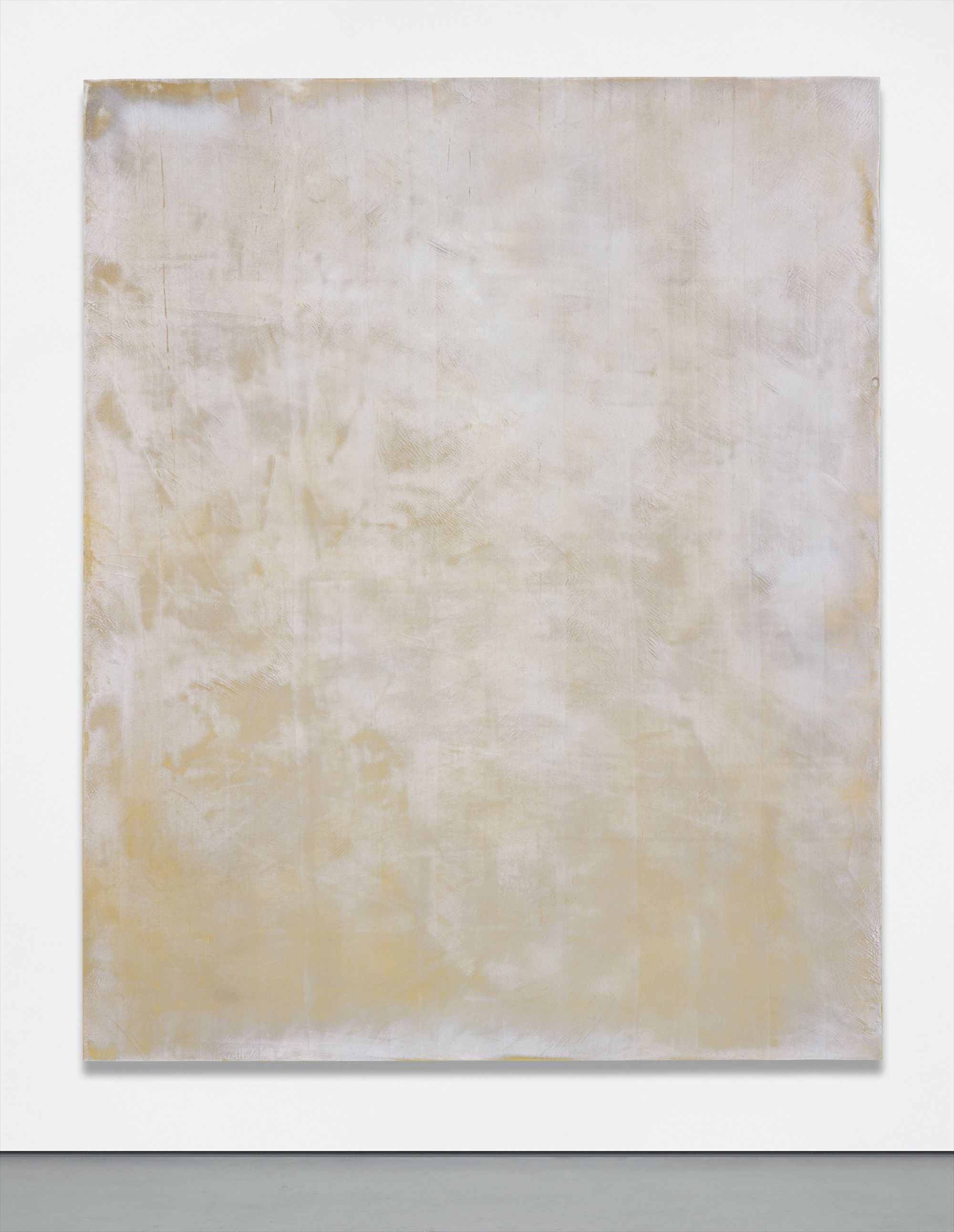

25Ο◆
Rudolf Stingel
Untitled
Full-Cataloguing
Born in Merano, a small town in South Tyrol, Stingel arrived in New York in the early nineties, causing a stir with his debut show at the Daniel Newburg Gallery. There, the artist covered the gallery’s entire floor with a dazzling orange carpet and visitors were invited to step on it, inevitably changing its surface, their footprints becoming part of the work. Stingel’s entire oeuvre has been characterized by this tendency to reexamine the near limitless possibilities of two-dimensional art to expand beyond the confines of its planar surface and into the viewer’s three-dimensional reality. Just as the carpet was clearly impressed upon and affected by the actions and motions of the visitors, so too is each painting reconstructed in the mind’s eye of the viewer to reflect their own individual situation as well as that of the surrounding physical space of the gallery. Not content to see painting as singularly abstract, figurative, machined or painstakingly crafted, Stingel has managed to dissolve these boundaries in his practice since this first groundbreaking exhibition whereby the viewer became part of the process, part of the artist’s original intent even.
The silver paintings manage to be both a highly worked, individual creation as well as a product of a proscribed process and a highly collaborative one as well. This performative, interactive aspect of Stingel’s work is highlighted by yet another of the artist’s iconic pieces, Instructions from 1989. Consisting of a DIY-like manual clearly elucidating the process by which Stingel created these paintings, Instructions destroyed much of the myth by enabling the reader to replicate the artist’s exact methods. The set of instructions challenged the very idea of the artist as the creator, questioning what painting could do and what its possibilities were at a time when painting had been proclaimed dead and Minimalism, Conceptual Art and photography-based art were dominating the artistic scene.
This Untitled is indeed one of these self-same silver paintings whose process of creation Stingel so clearly demystified in his Instructions. First laying down thick strokes of paint, here a warm and vivacious sunflower yellow, Stingel then overlays the surface of the canvas with tulle fabric. The thin gauzy nature of the material acts as a sort of filter or mask. Spraying through the textile with metallic silver paint, Stingel then removes his “screen” and the final painting is revealed. In these early silver works, the result was an iridescent layering of muted color, in which the undercoats of paint glimmered through the overlying metallic sheen, creating an almost classical illusion of luminous space. Being thin enough for the paint to pass through, but irregular in its drapery and folds across the canvas, the tulle leaves an imprint of itself, a sort of ghost image implying its materiality and presence while dissolving into its own brilliance.
Treating the gauze less as a filter and more deliberately as a stencil, these works blur the boundary between painting and printing, as the artist's hand is mediated by the intervening fabric screen. Stingel's ironic attempts to codify his own methodology in his Instructions is certainly redolent of Warhol's aspirations towards formalized factory-style reproduction, yet, in Untitled, the unique formations, rivulets and conglomerations of paint re-inscribe a sense of the lyrical upon the pictorial surface. Perhaps Stingel's method may be better understood in comparison to Richter's squeegee technique, in which the mediating tool – in Stingel's case, the gauze – serves to guide, rather than to prescribe, the articulation of paint across the plane of the canvas.
Throughout his career Rudolf Stingel has been able to successfully incorporate a highly conceptual aspect to his materials and process-based practice. His preoccupation with what painting is and what it can achieve has taken him to challenge every assumption and theory about the medium. Having started his career at a time where painting’s end had been declared, Stingel followed his own direction, becoming part of a generation of artists who instead of abandoning the medium decided to explore it further. Untitled signals the start of an oeuvre that has continued to consistently confront the traditional idea of the concept of authorship, and offer a deconstruction of the processes of art making. Stingel's ultimate goal is to demystify the artistic process, the artist, and finally, the art object. And yet in spite of, or perhaps because of this sort of intentional misdirection, works like Untitled, 1996, never cease to enchant with their luscious physicality and ethereal beauty.
Rudolf Stingel
Italian | 1956Rudolf Stingel came to prominence in the late 1980s for his insistence on the conceptual act of painting in a context in which it had been famously declared dead. Despite the prevailing minimalist and conceptual narrative of the time, the Italian-born artist sought to confront the fundamental aspirations and failures of Modernist painting through the very medium of painting itself. While his works do not always conform to the traditional definitions of painting, their attention to surface, space, color and image provide new and expanded ways of thinking about the process and "idea" of painting. Central to his multifarious and prolific oeuvre is an examination of the passage of time and the probing of the fundamental questions of authenticity, meaning, hierarchy, authorship and context by dislocating painting both internally and in time and space. Stingel is best known for his wall-to-wall installations, constructed of fabric or malleable Celotex sheets, as well as his seemingly more traditional oil-on-canvas paintings.